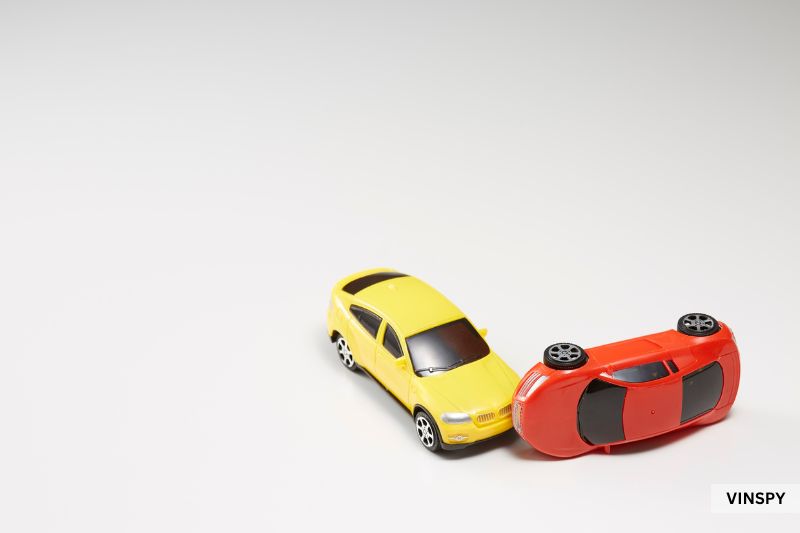Most buyers check the mileage. Fewer ask the more important question: has this car ever been in a crash?
Accident history isn’t always visible, and sellers don’t always know (or tell) the full story. A car can look spotless, drive fine, and still hide serious past damage under fresh paint or new parts.
Whether you’re buying from a dealership, a private seller, or a friend of a friend, knowing the vehicle’s history can save you thousands in repairs, insurance headaches, or even safety issues.
In this article, we’ll walk you through how to check if a car has been in an accident, what signs to look for, and how to make sure you’re getting a good deal for your money.
Why Accident History Still Matters

You can’t always trust a well-kept exterior. A car might look spotless on the surface and still hide a rough history under the paint or behind a replaced panel.
Undeclared accidents are more common than you’d think. A vehicle might have been fixed after a crash, passed between owners, and ended up on a lot with no mention of what had happened. Some damage never gets logged in insurance company databases, and sometimes, the seller doesn’t even know, especially if the car was imported or flipped quickly after repairs.
In addition, poor repairs can lead to frame issues, faulty airbags, or uneven suspension wear that only becomes apparent months later, usually when you least expect it. This can compromise highway safety, not just for you, but for everyone else on the road.
You could also be buying a car that’s worth less than what you’re paying. A car with an accident history almost always has a lower resale value, even if it drives fine. Dealers and private buyers check that record and adjust their offers accordingly.
If there’s anything to remember, it’s that visual inspection isn’t enough. When you’re buying a car, you’re buying its past, too, and if you don’t check that ownership history for yourself, you’re taking a risk.
What a Visual Inspection Can Reveal
Some crash damage hides in plain sight. You just have to know where to look.
Start with the basics. Take a few steps back and really look at the car from all angles. Do the body panels line up properly? If things look too tight on one side and wider on the other, chances are there’s been some structural work done.
Now check the paint. Look for different shades, uneven finishes, or patches that look a little too fresh. A newly sprayed panel could be hiding older damage. Bubbling can be a sign of rust or rushed work underneath.
Under the bonnet, check for welding marks, especially near the frame or shock towers. Rough seams or areas that look cleaner than the rest of the engine bay usually mean that something has been worked on.
None of these alone are dealbreakers, but they’re rarely just random. If you notice a few oddities, there’s probably more going on than the seller’s letting on.
And even if the outside looks clean, you’ll want to back that up with a history check. VinSpy can pull the stuff you won’t see: previous damage, odometer rollbacks, write-offs. Don’t guess with your safety (or your wallet)
VIN, License Plate, and Chassis Checks

The Vehicle Identification Number, or VIN for short, is the car’s entire backstory, pressed into 17 characters. Where it was built, what model it is, and most importantly, what it’s been through. Crashes, repairs, write-offs – it’s all in there.
You’ll usually find it:
- At the bottom of the windshield (driver’s side)
- Inside the driver’s door frame
- On registration papers or the title
Once you have the VIN, you can run a check with a proper tool like VinSpy and see what’s hiding behind the polish: accident records, insurance claims, odometer rollbacks, total loss status, etc.
In the U.S., the National Insurance Crime Bureau (NICB) also provides a free VIN check to spot vehicles reported as stolen or salvaged by participating insurers.
For even better accuracy, you can also run a chassis check. Chassis number discrepancies can mean cloned vehicles, grey imports, or rebuilds that were never properly recorded.
What Shows Up in a Vehicle History Report (and What Doesn’t)

A good vehicle history report is one of the most valuable tools you can use when buying a used car. Here’s what you can expect to find:
- Insurance write-offs (including official categories like salvage, total loss, Cat S/N, etc.)
- Reported accidents, especially those with insurance claims
- Title issues, like salvage or rebuilt titles
- Flood damage, namely in flood-prone countries like the US, India, and parts of Southeast Asia
- Odometer rollbacks, where mileage readings don’t line up between service records
That kind of info usually comes from insurers, government records, and inspection reports, and when it’s there, it’s extremely useful.
But not everything makes it onto the report.
You won’t always see:
- Fender benders that were handled without a police report.
- DIY repairs or cosmetic fixes done under the radar
- Damage covered privately between the two drivers
- Cases where parts were swapped or repaired with no formal documentation
That’s why a clean history report doesn’t always mean a clean car.
The best approach is to combine the report with a proper inspection, either your own or one done by a trusted mechanic. Look for signs that back up (or contradict) what the report shows.
VinSpy reports scan both government and private databases for a broader snapshot than free tools or partial services. If there’s something out there to find, you’ll want the best shot at finding it.
What “Repaired” Actually Means
When a car gets into a serious accident, it can be labelled with a write-off category, but what that means varies depending on where you are.
In the UK, you’ll see Category S (structural damage) and Category N (non-structural). In the US, some of the labels are Salvage or Rebuilt Title. In Australia, the Written-Off Vehicle Register (WOVR) means anything that’s been assessed as too expensive or unsafe to fix.
All these terms are basically warnings for future buyers: this vehicle suffered major damage at some point, and while it may have been repaired, it’s not the same as a clean-title car.
However, just because something has been repaired doesn’t mean it was done correctly. Some shops cut corners or use second-hand or non-original parts, and unless someone kept detailed records (which they often don’t), there’s no way to tell how deep the damage really went.
If you’re considering a write-off car, ask questions:
- Who did the repairs?
- Did they use OEM parts?
- Is there a service history or warranty?
- Was the car re-inspected after repairs?
This stuff matters not just for safety, but for resale, insurance, and even loan approval. If the seller seems cagey or vague, that’s your cue to walk away.
Seller Obligations and Buyer Expectations: Who’s Responsible for What?

When it comes to accident history, the rules aren’t the same for everyone, and depending on where you are, the legal lines can get blurry.
A licensed car dealer usually has more to answer for. In the US, the FTC’s Used Car Rule makes it clear: they have to disclose major repairs. In the UK, dealers can’t hide a known accident history under the Consumer Protection from Unfair Trading Regulations. Australia follows suit under its Australian Consumer Law.
Private sellers are a different story, though. In many places, they’re not required to say anything unless you ask.
Still, legal doesn’t always mean ethical. Selling a car with undeclared damage undermines trust, and once that trust is gone, so is any chance of a fair deal.
It’s best not to take anything for granted. Ask direct questions, request service and accident repair records, run a VIN check, and if anything feels off, get an independent inspection.
Should You Still Buy a Car That’s Been in an Accident?

Just because a car’s been in an accident doesn’t mean it’s a bad buy. In fact, depending on the type of damage and how well it was repaired, it might still be a steal, if the price matches the history.
What matters most is the nature of the damage. Cosmetic scrapes or a replaced bumper aren’t the same as structural damage or frame repairs. The big three to take seriously:
- Airbag replacement
- Suspension issues
- Frame alignment
If any of those were involved, the work needs to have been done properly and documented.
You also want to know who did the repair work. Was it a certified body shop using OEM parts or a backlot job with recycled panels and cheap paint? These details can make the difference between a solid secondhand deal and a long-term headache.
Price should always be taken along with the car’s history. If the repairs were done right, and you’re saving a meaningful amount compared to a clean-title equivalent, it might be worth it. But don’t just look at the listing. Compare it to similar models that haven’t been in a crash to get an idea of a baseline.
So, to answer the question, yes, you can buy a car with an accident history, but it still has to be in good shape. Safety first, records second, value third. If all three line up, you’re in a better position to make a smart call.
When to Walk Away

Some deals just aren’t worth it, no matter how nice the car looks or how tempting the price sounds.
Walk away if:
- The seller avoids straight answers about repairs.
- The condition doesn’t match the story: new parts with no record, or mileage that feels off.
- The airbags are missing, don’t match, or are replaced with no paperwork to back it up.
- The title status is unclear, altered, or conveniently “not available right now.”
You don’t need to be a mechanic to spot a bad deal. If something feels off, it probably is. Take a step back, breathe, and remember: there are always other cars.
And before you commit, run a full history check with VinSpy. It’s quick, and it can save you both money and time down the line.
Trust, But Verify

A car with an accident history isn’t always a bad choice, but skipping the background check almost always is. From subtle bodywork clues to full-blown write-off categories, the signs are there if you know where to look.
So, whether it’s your first car or your fifth, take the time to get the facts, ask questions, and run the reports. And if something feels off, trusting your gut could be the difference between a good deal and regret on wheels.



